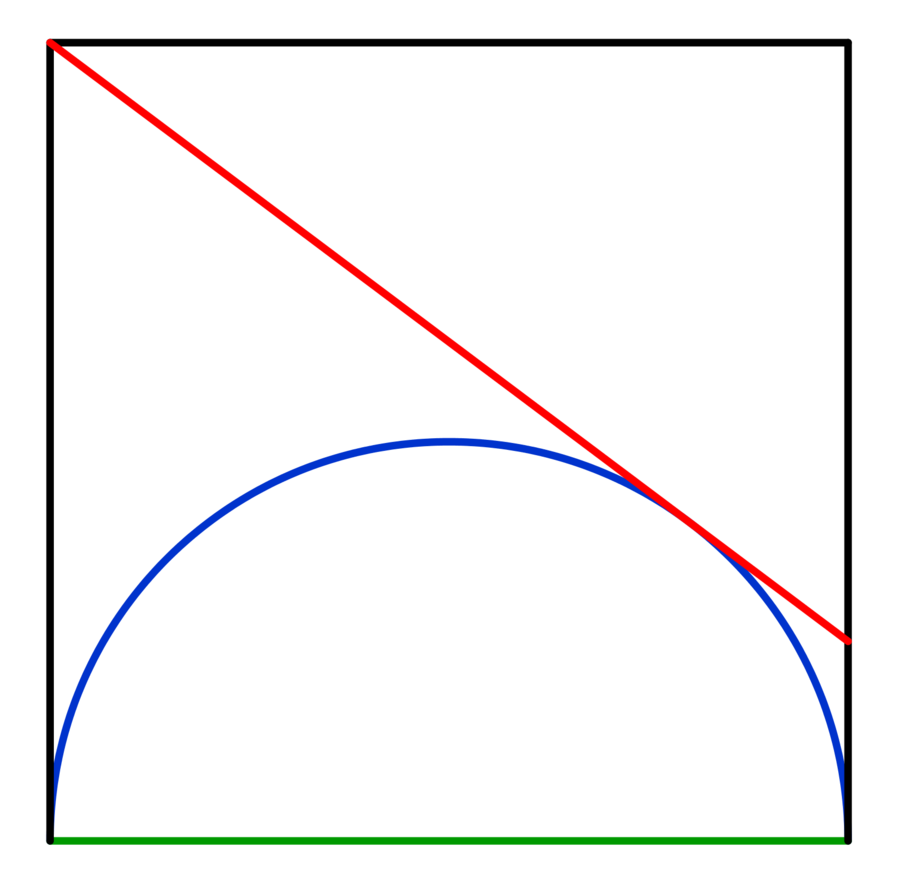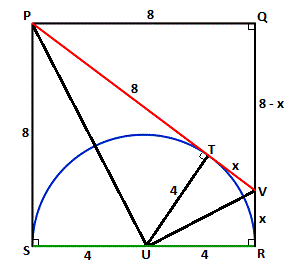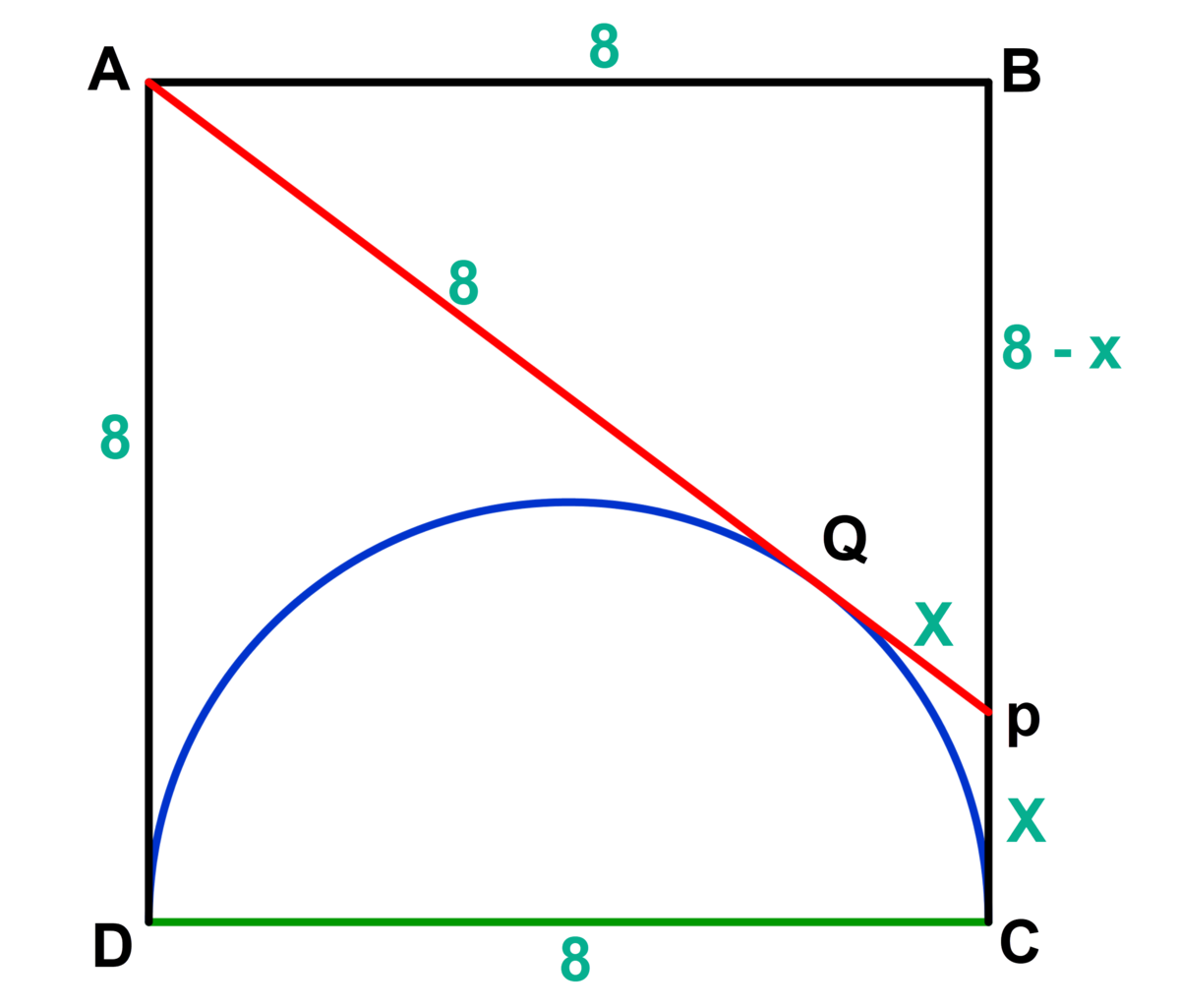Rojo, azul y verde

The figure above shows a square with perimeter 32 cm. The diameter of the inscribed blue semicircle is the green side of the square. A red tangent to the blue semicircle is drawn joining the square upper left vertex and a point on its right side. Find the length of the red tangent in cm.
The answer is 10.
This section requires Javascript.
You are seeing this because something didn't load right. We suggest you, (a) try
refreshing the page, (b) enabling javascript if it is disabled on your browser and,
finally, (c)
loading the
non-javascript version of this page
. We're sorry about the hassle.
4 solutions
Let the square be P Q R S , let T be the tangent point of the red tangent line and the semicircle, let U be the center of the semicircle, and let V be the intersection of the red tangent line and Q R . Let x = V R .

Since the perimeter of the square is 3 2 cm, each side is 8 cm, and the radius of the semicircle is 4 cm.
△ P S U ≅ △ P T U and △ V R U ≅ △ V T U by HL congruence, therefore P T = P S = 8 cm and T V = V R = x .
By Pythagorean's Theorem on △ P Q V , 8 2 + ( 8 − x ) 2 = ( 8 + x ) 2 , which solves to x = 2 cm.
Therefore, the red tangent line is 8 + x = 8 + 2 = 1 0 cm.
PUT and TUV are congruent. So TV = 2
Log in to reply
if you mean PUT and TUV are similar, then yes
Log in to reply
I did mean similar. But it makes the solution much simpler
Log in to reply
@Malcolm Rich – I think that's a matter of preference. To prove that △ P U T ∼ △ T U V , you can show that ∠ S U P + ∠ P U T + ∠ T U V + ∠ V U R = 1 8 0 ° , and since ∠ S U P = ∠ P U T and ∠ T U V = ∠ V U R , ∠ P U T + ∠ T U V = 9 0 ° , which means ∠ P U T = ∠ U V T , so the triangles are similar by AA similarity. I thought this way was somewhat wordy (unless you know of a better way to show that the triangles are similar), so I used Pythagorean's Theorem instead for a quicker explanation. But both ways will lead to the correct answer.
Log in to reply
@David Vreken – I agree. There are many approaches that work. It would perhaps save a few characters recognising that UTVR and PSTU are both "kites" with angles SPT and RUT being identical due to their relationship to SUT.
It's pretty much the same as your explanation but feels to me more elegant.
Horizontal Curve in Highway Engineering
Red Line = T1 + T2 = R* tan 2 D 1 + R* tan 2 D 2 = 4 * 4 8 + 4 * 8 4 = 8 + 2 = 10
T1 = First Tangent , T2 = 2nd Tangent , Di = Deflection Angle

perimeter of the square is 32 cm so each side is 8 cm.
since the tangent lines from same point are equal so AD=AQ and QP=PC=x
Δ ABP is right angle triangle so ( A B ) 2 + ( B P ) 2 = ( A P ) 2
8 2 + ( 8 − x ) 2 = ( 8 + x ) 2
so x=2 and AP = 8 + x = 10
we find using the red right triangles that sin ( θ ) = 5 1 , cos ( θ ) = 5 2 . the desired lenght using the right triangle with the blue base is sin ( 2 θ ) 8 = 2 sin ( θ ) cos ( θ ) 8 = 1 0